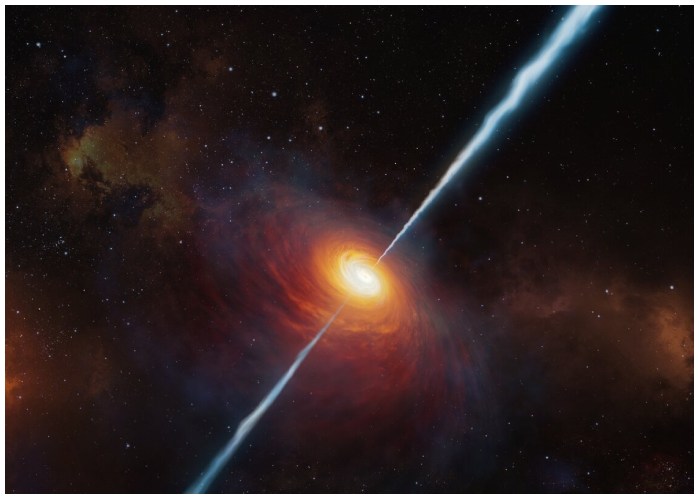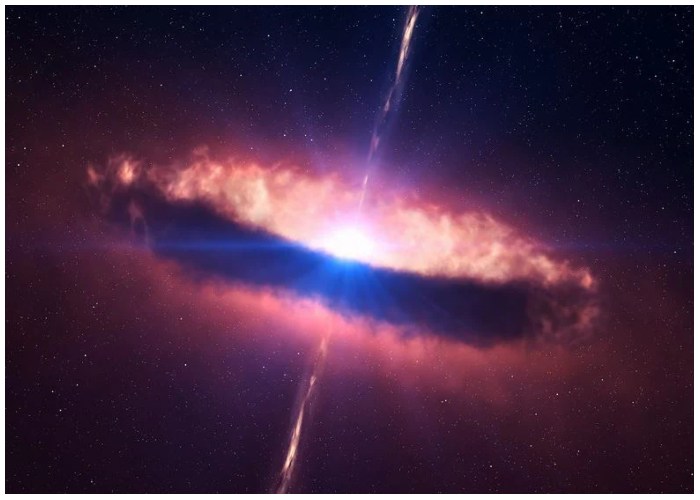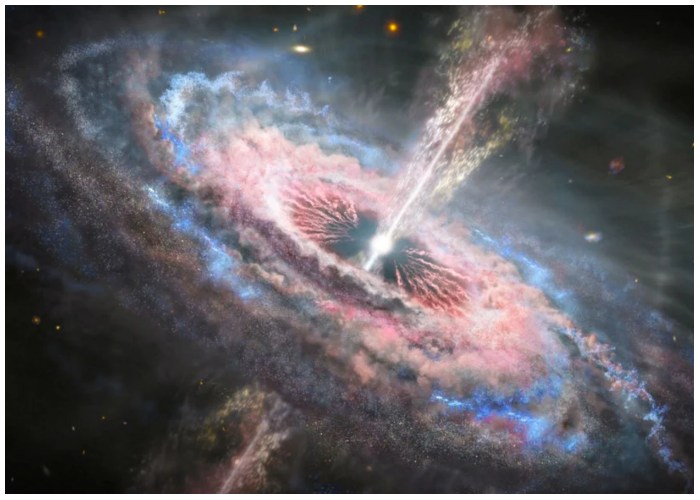The Nature of Quasars and VIK J2348-3054
Quasars are powered by supermassive black holes that reside at the center of galaxies. As gas and dust fall into these black holes, they heat up and emit tremendous amounts of energy, visible across vast distances in the universe. VIK J2348-3054 is one of the most distant quasars known, with its light having traveled 13 billion years to reach Earth. This means we are observing it as it existed when the universe was a mere 770 million years old. Despite its age, the black hole at the center of this quasar had already accumulated a mass 2 billion times that of the Sun, suggesting it formed in a particularly dense and active region of space.

The Quasar’s Influence on Nearby Galaxies
What makes VIK J2348-3054 especially remarkable is its apparent ability to suppress star formation in surrounding galaxies. Observations have shown a surprising lack of star-forming galaxies within a 16 million light-year radius of the quasar, an area that should be teeming with new stars given the density of the region. This absence of star formation is likely due to the quasar’s intense radiation, which heats up the gas in nearby galaxies. When gas is heated, it cannot cool down sufficiently to condense and form new stars, effectively halting the star formation process. This discovery challenges previous assumptions about how galaxies evolve in the presence of quasars and highlights the destructive potential of these powerful cosmic entities.

The Broader Implications for Galactic Evolution
The case of VIK J2348-3054 provides valuable insights into the complex relationship between quasars and galaxy formation. While quasars are often seen as markers of active and evolving galaxies, their ability to stifle star formation introduces a new dimension to our understanding of cosmic evolution. The findings suggest that quasars could play a significant role in shaping the development of galaxies, possibly even determining which regions of space become rich in stars and which remain barren. Moreover, the research raises the possibility that our own galaxy, the Milky Way, might have been influenced by a quasar in the distant past, affecting the rate at which stars formed within it. Future studies will be crucial in determining whether the patterns observed around VIK J2348-3054 are common in other parts of the universe or unique to this particular quasar.

Conclusion
The discovery that quasar VIK J2348-3054 may have halted star formation in its vicinity is a significant advancement in our understanding of the universe. This finding not only sheds light on the destructive capabilities of quasars but also prompts further exploration into the role these cosmic powerhouses play in galaxy evolution. As astronomers continue to study quasars and their effects, we may uncover new aspects of the universe’s history, offering deeper insights into the forces that have shaped the cosmos over billions of years. The case of VIK J2348-3054 serves as a reminder of the dynamic and sometimes destructive nature of the universe, where even the most distant objects can have profound impacts on their surroundings.